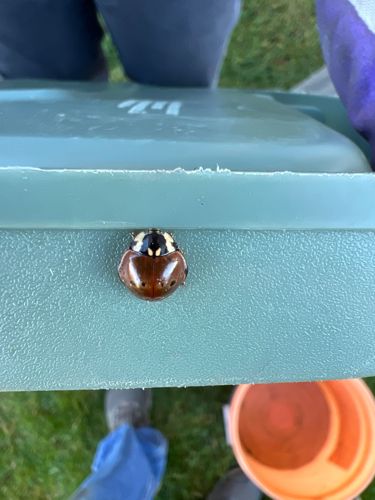Twenty-spotted Lady Beetle or Twenty-spotted Ladybug
Scientific Name: Psyllobora vigintimaculata
Order & Family: Coleoptera, Coccinellidae (often referred to as lady beetles or ladybugs)
Size: 3-5 mm (approximately 0.12-0.2 inches)

Natural Habitat
Typically found in meadows, gardens, agricultural fields, and other areas with abundant vegetation, often on plants that develop powdery mildew.
Diet & Feeding
Unlike many predatory lady beetles, this species is mycophagous, meaning it feeds on fungi, primarily powdery mildews (e.g., Erysiphales) and sometimes other fungal spores. Both adults and larvae consume fungi.
Behavior Patterns
Like other lady beetles, they undergo complete metamorphosis (egg, larva, pupa, adult). They are active during the day. When disturbed, they may feign death or excrete a foul-smelling fluid (reflex bleeding) as a defense mechanism.
Risks & Benefits
Benefits: They are beneficial insects as they help control powdery mildew on plants, which is a common plant disease. They pose no risks to humans or animals. Risks: None.
Identified on: 10/7/2025